Mackenzie & Ebert completes redesign at The Island in Dublin
Mackenzie & Ebert has completed a redesign of the front nine at The Island Golf Club in Dublin, Ireland.
The club commissioned Mackenzie & Ebert to produce a master plan in 2016. The main focus of the plan was to elevate the level of the front nine so it could match the standard of the back nine.
Martin Ebert reflects on his initial visit. “Finishing the front nine, we couldn’t work out how the back nine could get much better,” he said. “But, upon completion of our first walk, we understood why golfers held the back nine in such high regard, with the thirteenth, fifteenth and seventeenth holes being standouts and the short par-four fourteenth being remarkable, given its incredibly narrow fairway.”
M&E’s master plan was discussed with the club committee before a final set of proposals was agreed – illustrated with computer generated visualisations produced by Ireland-based firm Golfgraffix.
The plan included a redesign of the front nine and a rethink of the bunkering. In the first two winters – 2016/17 and 2017/18 – the club worked on the fifth, sixth, tenth, fifteenth and seventeenth holes, converting revetted fairway bunkers into slightly larger, rougher-edged bunkers along with reconfiguring the first tee complex.
During a renovation completed some years ago, Martin Hawtree had added a 19th hole – a par three that followed on from the third hole, the course then re-joining the layout with an alternative tee (5A) for what used to be the fourth hole. This hole was occasionally played in the winter.
“The introduction of this hole into the full 18-hole routing was key to the proposals on the front nine,” said Ebert. “Some adjustments were made to the hole to make it safer relative to the tees of 5A, more playable and suitable for all year-round play. This included the addition of new tees and more expansive green surrounds, so that the hole could meet the standard of the rest of the course. The view from the new elevated tees is spectacular with the sea behind, creating yet another memorable part of the course. It is likely to become regarded as one of the most photogenic par threes in the world of golf.”
The original fourth was a dogleg left par four that shaped around a large dune to the left. Playing from the alternative tees – which make it a safer hole – it was too short, especially as the next two holes are also short par fours.
“A decision was made to push the green back to the site of the short game area, leaving a fairway that winds through large dunes to a green that seemingly sits in front of the clubhouse even though it is some 100 yards away,” said M&E architect Mike Howard. “This has produced a stern par four of 467 yards from the back tee that plays into the prevailing wind. With two short par fours following this, it feels an appropriate place in the round for such a hole. To make the landing area suitable from the new tees, the dunes to the left were pushed back and, at the same time, the fairway was given some attractive links undulations.
“With the routing of the first five holes completed, the focus moved to the main area of the project, the creation of the new eighth and ninth holes. The original seventh was a well-respected hole with a table-top green that was tough to hit in regulation but with unattractive, very tall sea buckthorn surrounding the green. However, within the buckthorn, well to the right, was the perfect site for a new green. This produced a slight dogleg right and a par four measuring 443 yards and playing through an avenue that has been formed in the dunes. Sand needed to be moved to break through a ridge and create a view to the new green from the landing area. There are now some fantastic fairway contours that roll from the landing area to the green. A significant runoff to the left defends the approach and the slightly away-sloping green will make the approach shot, typically played with a following prevailing wind, tough to control.”
Ebert added: “The original eighth and ninth holes were always the weakness of the layout at The Island. The eighth was a short par four that was perhaps driveable for some but for most was a blind, forced lay-up tee shot into a collection area that quickly became heavily divotted. A shot into the collection area then left a blind, short approach into a green nestled within the dunes. This green location unfortunately resulted in a narrow route down the right side of the green for traffic, forcing the club into the construction of an artificial path directly adjacent to the putting surface. Although it was most definitely quirky and one of the original holes, it was easy to argue that it was a poor hole, and one that did not suit the rest of the drama on the course. The weakness of the hole was compounded by the fact that tee shots were regularly finishing in the garden of a neighbouring house, a problem that needed to be solved.
“The ninth was the weakest par three on the course with little to make it memorable apart from an odd reverse step in the green surface. With hole 4A now included in the layout as the fourth and with the seventh green pushed over to the right – becoming the new eighth – there was space and scope to combine the eighth and ninth holes to create a strong 436-yard par four playing into the prevailing wind, to a new green situated in the carry of the original par-three ninth. Like the eighth, a number of new dunes needed to be created around the green and alongside the fairway to divide the new eighth and ninth and to ensure that the hole fitted the character of the rest of the course.”
The old ninth green, green surrounds and greenside bunkers have been converted into a new short game area, located next to the clubhouse.
“The creation of new dunes was a key feature of the project and the existing, naturally formed dunes were analysed to make sure the profiles of the new and the old would match,” said Howard. “A variety of gradients from the peaks was vital, as was the blending of ridges down into the fairways to ensure the finished shapes look as natural as possible. The main aim has always been to create something that could be mistaken as natural when in fact it has been completely made by man.”
DAR Golf Construction began work in October 2019, with Graham D’Arcy as the site foreman and lead shaper for the project. He was involved in the rebuilding of some of the greens at The Island when Martin Hawtree worked there previously. The project team also included agronomist Ian McClements of the STRI Group and irrigation designer Adrian Mortram.
The project has almost been entirely self-sufficient with all earth movement balancing through cut and fill, root zone being recycled for all areas, all rough vegetation being reused, and the three new greens using turf from existing greens that were removed from the layout.
The coronavirus pandemic will impact the opening date, although DAR Golf was able to complete shaping and turfing of the new ninth fairway, the last part of the project, before the end of March. The tees for the ninth could not be built before a curfew came down on the construction but it will not take long to get these completed once work can recommence. The three new greens were completed and turfed before the end of November, so they will be fully established for the originally-stated opening of 1 May.
| Slideshow HTML |
-
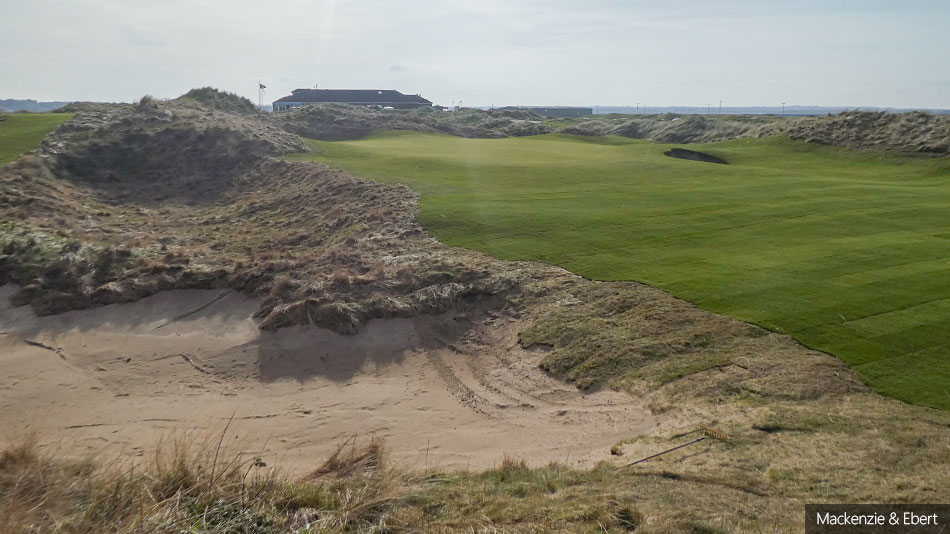
Mackenzie & Ebert has redesigned the front nine at The Island in Dublin
-
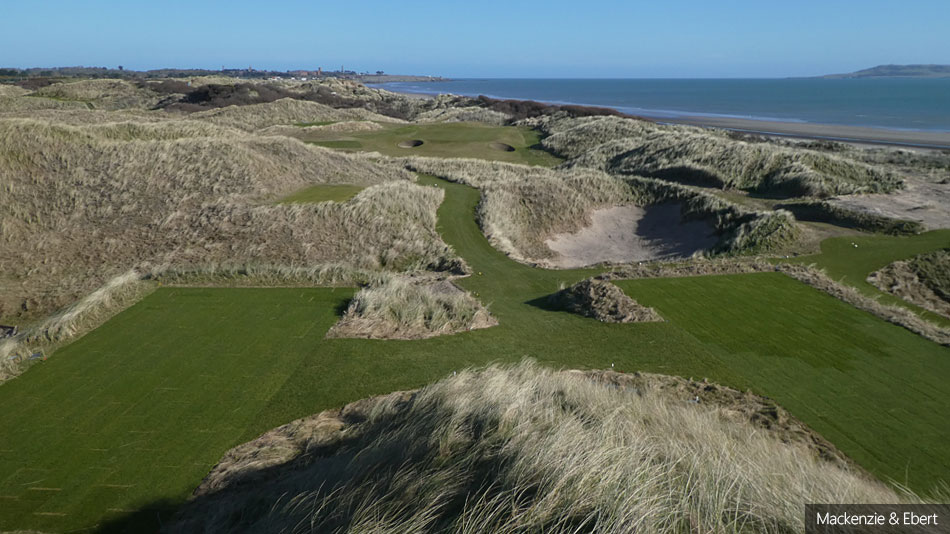
The club’s nineteenth hole has been integrated into the main routing as a new fourth hole
-
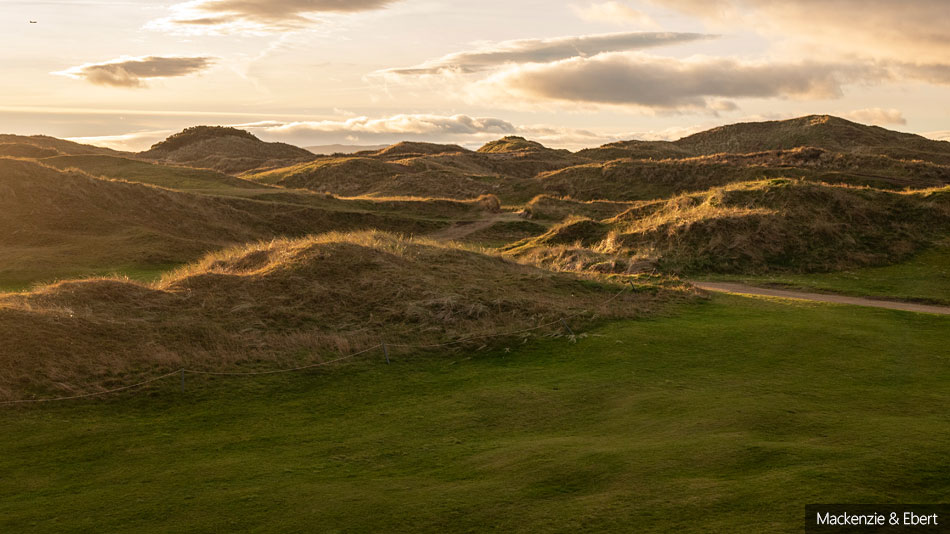
The natural duneland at The Island provided inspiration for the new dunes which have been created at the new eighth and ninth
-
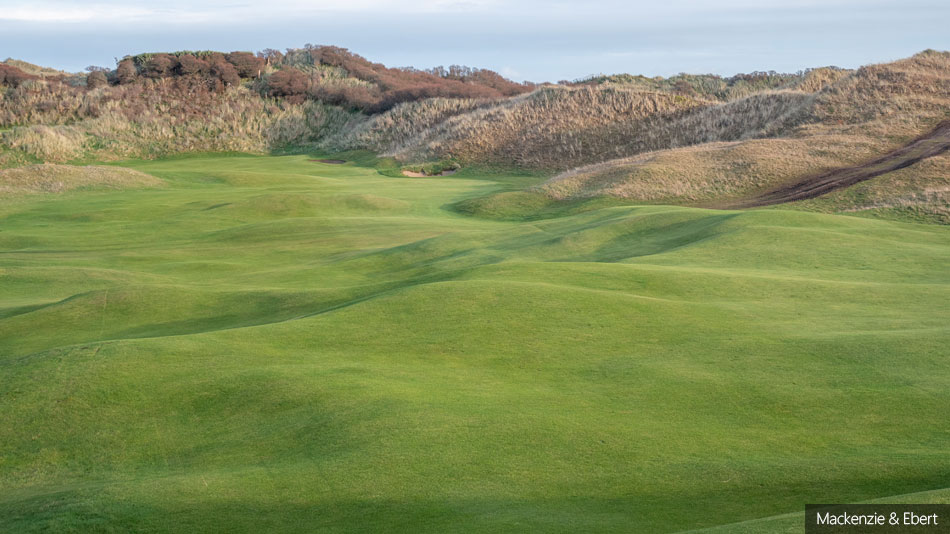
Beautiful natural contours on the fairway of the sixth hole (previously the fifth)
-
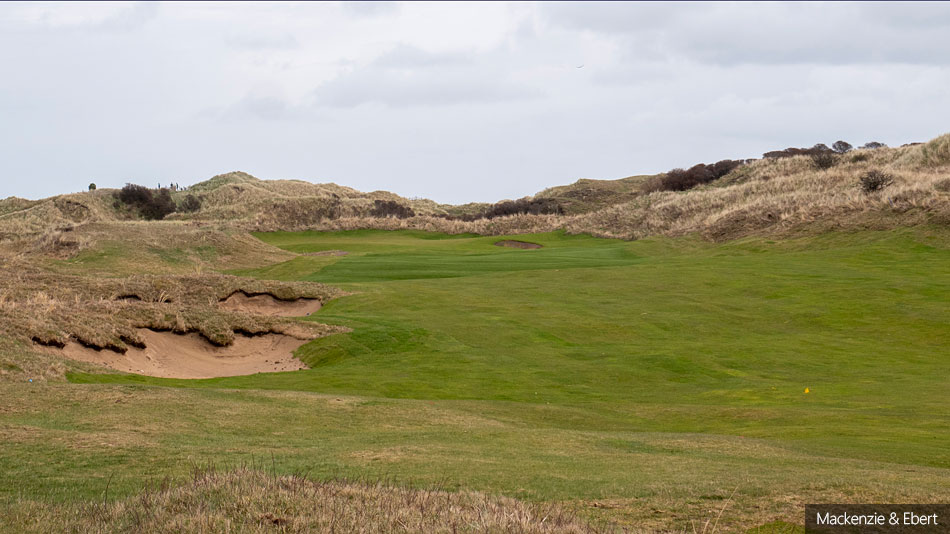
The green of the original seventh hole, now the eighth, has been moved
|